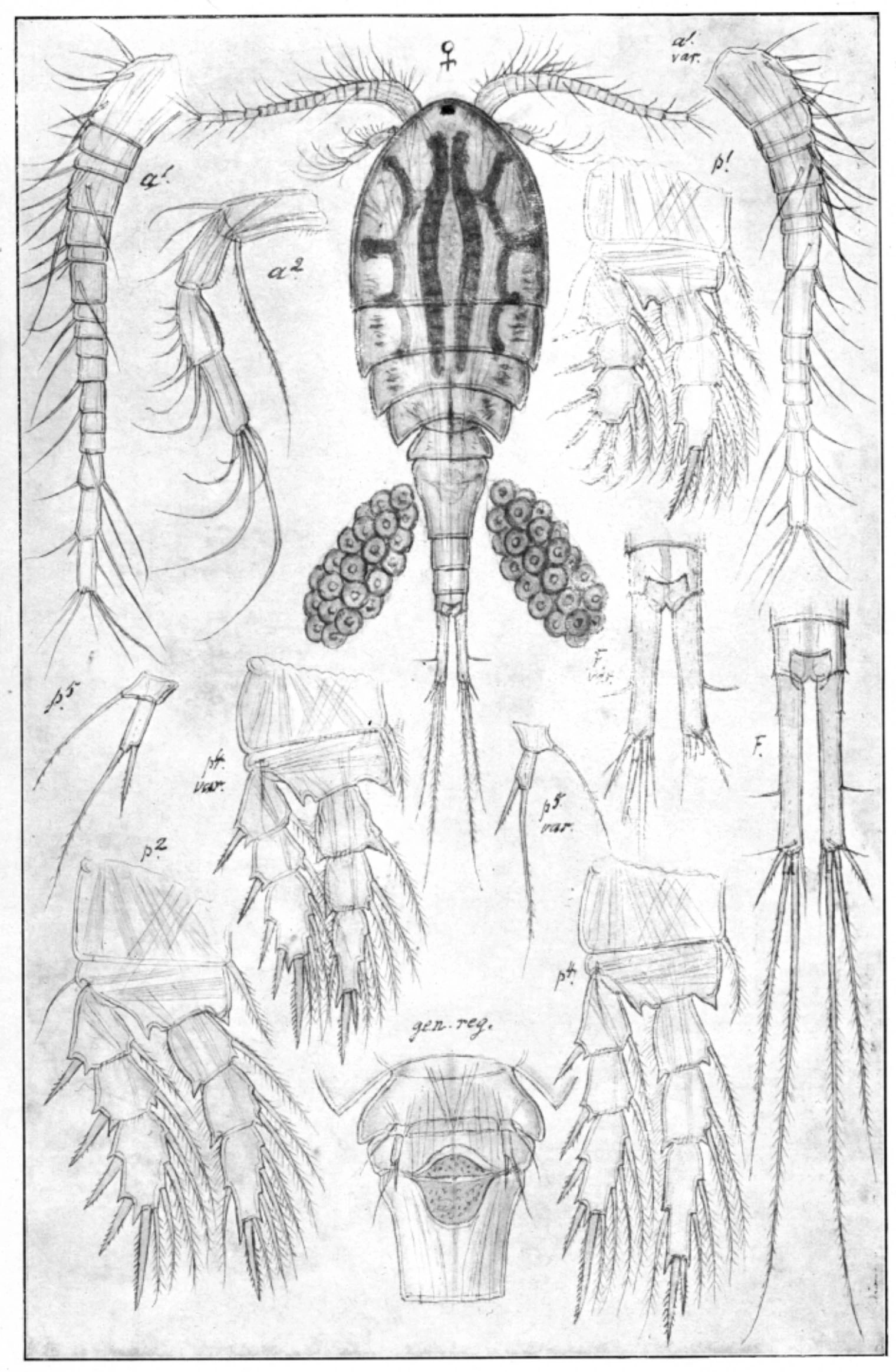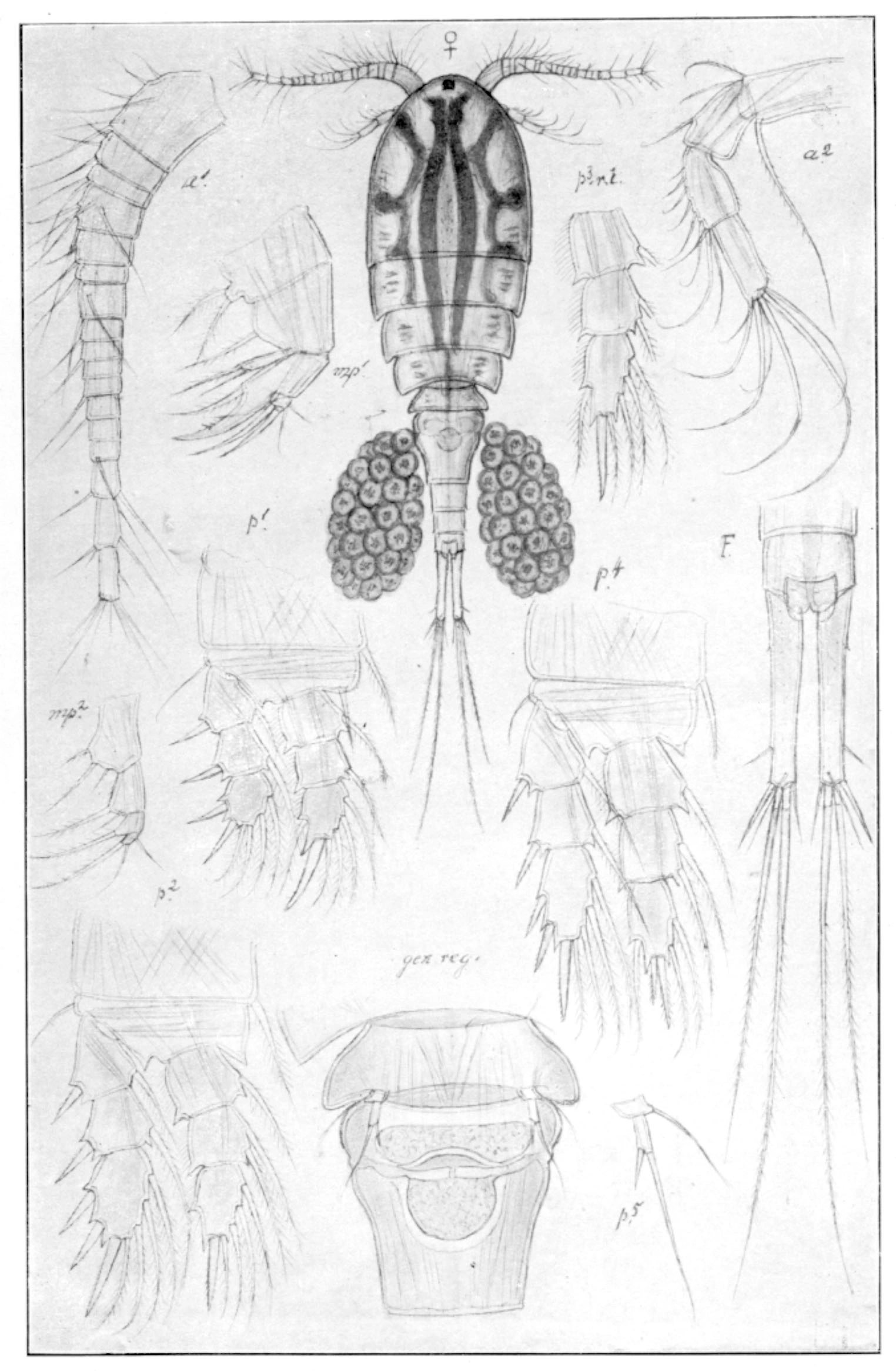Diacyclops bicuspidatus
Diacyclops bicuspidatus is mainly found in ponds and ditches. Its body is long and slender with a furca where the lateral seta is attached close to the middle.
Key characteristics
Diacyclops bicuspidatus (female)
Diacyclops bicuspidatus is long and slender, and the last thorax segment (5.) is only slightly protruded laterally. Its furca is longer than in other Diacyclops species, having a length which is equal to the length of the three last abdominal segments. The lateral seta of the furca is attached close to the middle. The antennae consists of 17 segments. Its colour is generally yellowish, with a more or less distinct orange or reddish tinge.
Female: Length 0.9–1.6 mm
Male: Length 0.8–1.0 mm
Ecology and distribution
Except for a few records, this littoral species has been found in the vicinity of Oslo. In central Europe it is also planktonic. The records are from water bodies of varying size, but with its highest frequency in small ponds. These are situated 1–705 m a.s.l. pH is ranging from 5.0 to 8.1 and conductivity from 0.7 to 93 mS/m.
| Vitenskapelig navn | < 4,5 | 4,5 - 4,9 | 5,0 - 5,4 | 5,5 - 5,9 | 6,0 - 6,4 | 6,5 - 7,0 | 7,0 - 7,4 | > 7,5 |
|---|---|---|---|---|---|---|---|---|
| 0 | 0 | 0,8 | 1,8 | 2,2 | 1,5 | 2,2 | 9,5 |
| Vitenskapelig navn | < 1,0 | 1,0 - 1,4 | 1,5 - 1,9 | 2,0 - 2,9 | 3,0 - 3,9 | 4,0 - 4,9 | 5,0 - 6,9 | 7,0 - 9,9 | > 10,0 |
|---|---|---|---|---|---|---|---|---|---|
| 0,7 | 0,4 | 0 | 0,7 | 0 | 0,6 | 1,8 | 2,8 | 11 |
| Vitenskapelig navn | < 0,01 | 0,01 - 0,09 | 0,1 - 0,9 | 1,0 - 9,9 | 10,0 - 99 | 100 - 999 | > 1000 |
|---|---|---|---|---|---|---|---|
| 7,8 | 8 | 1,1 | 1,3 | 0,7 | 0,3 | 2,2 |
| Vitenskapelig navn | < 100 | 100-299 | 300-499 | 500-699 | 700-999 | >1000 |
|---|---|---|---|---|---|---|
| 2,3 | 3,4 | 0,7 | 0 | 0,3 | 0 |
Look alikes
Diacyclops bisetosus

